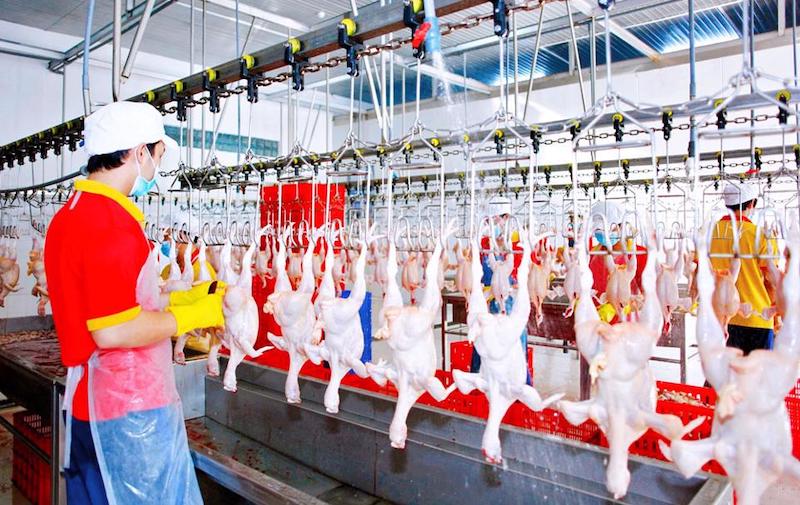Hanoi strives for high-tech agriculture by 2050
Hanoi will develop green and environmentally friendly agriculture based on climate change adaptation and strive to tackle environmental pollution in rural areas.
By 2050, Hanoi aims to become one of the localities with high-tech agriculture associated with an efficient and environmentally friendly agricultural processing industry.
| Semi-industrial poultry slaughter line in Hanoi's Chuong My District. Photo: Anh Ngoc/ The Hanoi Times |
The target was set in the action plan recently signed by Vice Chairman of the Hanoi People's Committee Nguyen Manh Quyen for the Strategy for Sustainable Agriculture and Rural Development for the 2022-2030 period, with a vision to 2050.
Under the plan, Hanoi aims to make 70% of all agricultural products hi-tech by 2030.
Hanoi will develop green and environmentally friendly agriculture based on climate change adaptation and strive to tackle environmental pollution in rural areas.
By 2030, the GDP growth of the agro-forestry-fishery sector will average 2.5-3%, and labor productivity is estimated at 7-7.5% per year.
The city also established the growth rate of livestock production value at 4.5-5.5% per year, and more than 70% of livestock products are produced in chains.
The proportion of cattle and poultry slaughtered in industrial concentration is about 70%.
The value of crop production will increase by 0.4 to 0.7% or more per year, and 45% or more of crops will be produced in a sustainable cooperative manner.
The value of aquaculture production will increase by an average of 3.5 to 4.5% per year, along with the production of high-quality seed to meet the city's demand.
The city also aims to have 30-40% of the production area following good agricultural practices (GAP) and an organic farming area representing about 2-3% of the total cultivated area.
The average per capita income in rural areas is expected to reach more than VND80 million ($3,226) per year. The proportion of trained workers will increase to over 80% and the rate of rural workers with regular jobs to 95% by 2030.


![[Infographic] Hanoi promotes hi-tech agriculture](https://cdn-media.hanoitimes.vn/2022/10/18/thumb_info.jpg?w=480&h=320&q=100)








